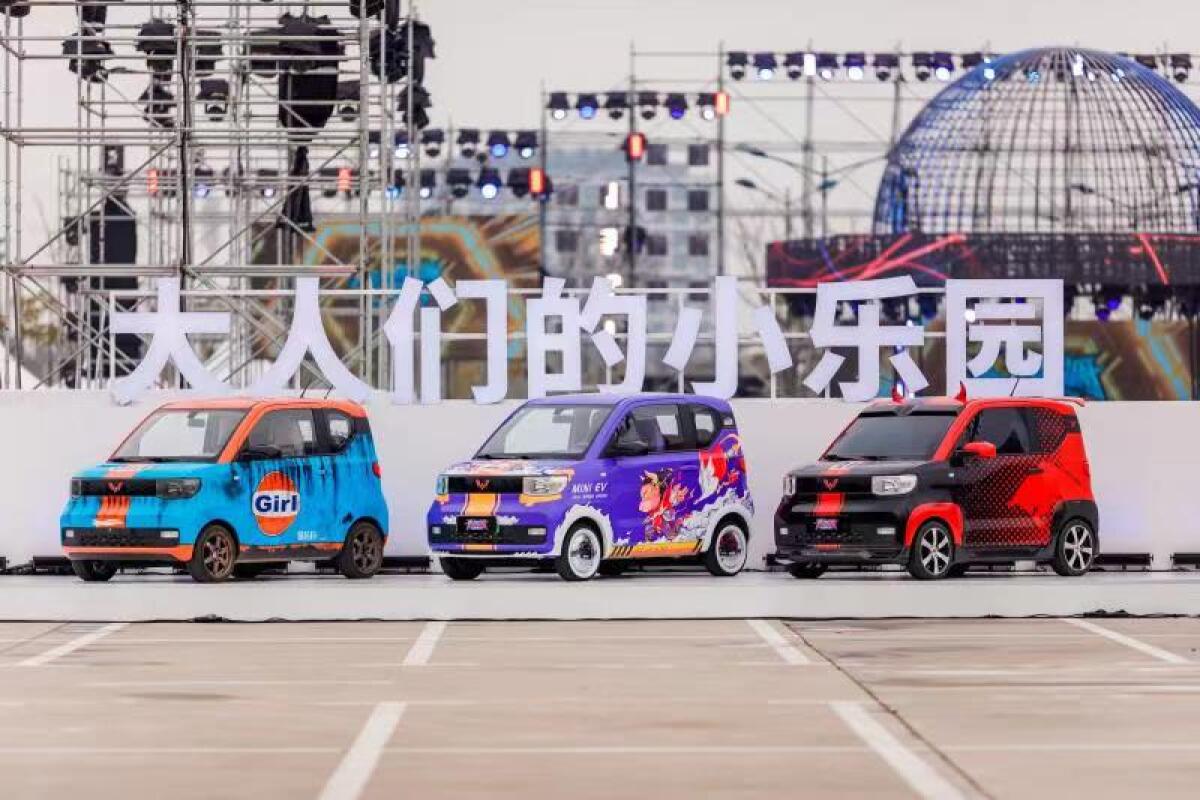Opinion: What California Gov. Gavin Newsom could learn from China’s response to climate change

- Share via
Gov. Gavin Newsom put an international spotlight on California’s climate policies in his speech at the United Nations last month. But when he heads to China to meet with officials on the same subject this month, he should do as much listening as speaking.
California has long led by example on environmental matters, and the world’s leading polluters, including China, have looked to the Golden State for ideas on reducing air pollution and increasing clean energy production. And California has a “world-leading climate action plan” to achieve carbon neutrality by 2045.
At the same time, California has seen its position as leader of the pack slip when it comes to solar power, energy-efficient construction and home insurance market stability. Newsom likes to say that “the future happens here first,” but it would be a mistake for him to focus exclusively on what China has to learn from California. For California to continue to lead the world on this issue, Newsom must learn from China.
World leaders are still doing far too little to stop the burning of fossil fuels. If they won’t heed climate scientists, can we at least get them to listen to the pope?
Unbeknownst to most Americans, China has accomplished something truly remarkable on clean energy and transportation over the last decade, deploying both on a staggering scale. According to one assessment, “China today generates enough power from clean sources to power Germany six times over, up from two times a decade ago.” And in just a few years, its clean energy generation will equal total U.S. electricity consumption. While China does remain far too reliant on coal-fired power plants, that hasn’t hindered the explosion of its renewable energy sector.
On a recent visit to Beijing, my first since the pandemic, I saw an electric vehicle landscape completely transformed. The city taxi fleet had gone almost entirely electric, and zero-emission vehicles of myriad brands (mostly Chinese) were everywhere. As of last year, Chinese drivers had purchased a cumulative total of 13.8 million electric vehicles, with sales in 2022 accounting for 29% of all auto sales in China.
This is well ahead of the United States, where electric vehicles made up a mere 8% of sales in 2022. California has done much better, with electric vehicles making up 24.3% of cars sold in the first half of this year. But we could still learn from China on this front, especially given Newsom’s goal of phasing out sales of new gas-powered vehicles by 2035.
When the last ice age ended thousands of years ago, the rate of global warming — which was roughly 10 times slower than what we see today — was rapid enough to wipe out entire species.
So what should Newsom be listening for? California’s climate ambitions will be met only by deploying clean energy and transportation on an unprecedented scale, and China has a lot to offer on that score. Strong industrial policy and fiscal support for renewable energy, paired with ever more ambitious targets for clean energy deployment, have brought the country to this point. China is also a world leader on offshore wind energy production, an area Newsom has sought to emphasize in California.
In addition, China has pushed a variety of consumer incentives and strengthened regulations that make electric vehicles easier to buy and drive than gas guzzlers. Not all of the Chinese government’s approaches will be palatable in California, but many will.
Not that China can’t learn from California too: Despite its rapid success at deploying clean energy technologies, China has a long way to go to meet its own goal of carbon neutrality by 2060. Newsom would do well to look for opportunities to collaborate in areas where California plans to move ahead aggressively, including methane mitigation, energy efficiency, industrial decarbonization, hydrogen development, cap-and-trade and climate adaptation.
Methane mitigation should be an especially rich area for cooperation. Methane is 80 times more potent than carbon dioxide as a greenhouse gas. And while methane emissions have been a special focus of the Biden administration, Washington is limited in its own ability to work with Beijing on climate or anything else for political reasons.
Newsom announced a new Subnational Methane Action Initiative last month, aiming to recruit states and provinces worldwide to commit to reducing emissions of the gas. China was noticeably absent from the founding signatories and is no doubt a prize target for Newsom. Winning any sort of pledge to mitigate methane emissions from abandoned Chinese coal mines would be one way for Beijing to answer international criticism of its reliance on the dirty fossil fuel. California, meanwhile, has its own methane mitigation issues that can only be helped by international cooperation.
Perhaps the best outcome of continued climate collaboration between California and China would be that each prods the other to do better on methane and other climate issues. On this subject, every state and country has room to improve and reason to do so quickly.
Alex Wang is faculty co-director of the Emmett Institute on Climate Change and the Environment and a professor of law at the UCLA School of Law.
More to Read
A cure for the common opinion
Get thought-provoking perspectives with our weekly newsletter.
You may occasionally receive promotional content from the Los Angeles Times.












